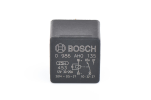AAziz
New Member
I'm having the same issue.I received a replacement U3000 front camera (unit 4). On 01-Feb, I powered the replacement U3000 for several hours in my office to charge up the RTC clock battery. I installed the U3000 in my car. The U3000 remained powered off from 01-Feb-2024 until today 09-Feb-2024. I was sick so I wasn't driving my car. The RTC clock issue occurred again. The first four minutes of video files from today's drive had a date/time from 01-Feb-2024 just after I installed the U3000 into my car. I reported that behavior to Thinkware support.
I discovered that the internal microphone on this replacement U3000 (#4) is not working correctly. There is a low level audio "hiss" sound present in the audio track. I confirmed I have the "Voice Recording" setting turned on in the settings. I used my headphones to listen to the audio track contents. The very first file created today has a very low volume / muffled "have a safe drive today" announcement recorded. So, the U3000 was attempting to record audio, but the internal microphone is messed up in this U3000 front camera.
U3000 unit 4 has a serial number that is 10 before the serial number from unit 3 which also has the RTC battery issue. Both were manufactured in June 2023. I've reported this problem to Thinkware support as well. _bang_head_here_
Camera is in a sports car. When the doors and windows are close, there is a loud hissing noise. When the windows are down and I'm driving, I hear nothing but wind. I had a VioFo temporarily inside that car and it picked up much better audio.


